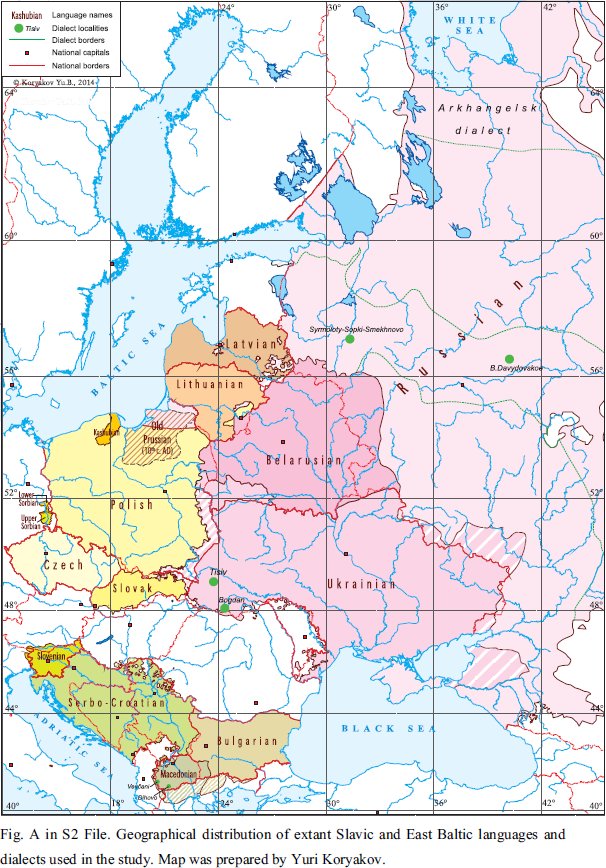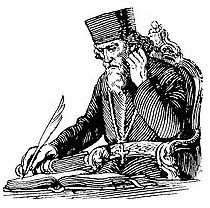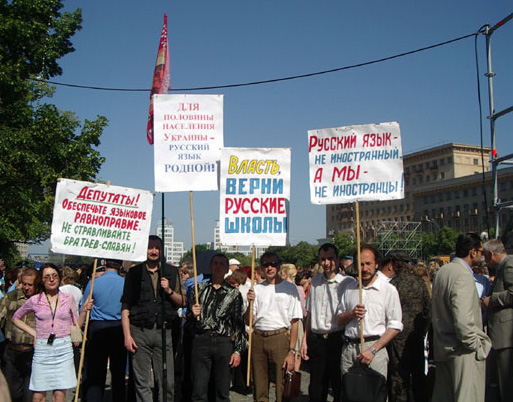 |
Dilove
Dilove ( uk, Ділове) is a village located in Rakhiv Raion of Zakarpattia Oblast in Ukraine. There has been a marble quarry in the village since 1947. History Dilove was first mentioned in writing in 1615 and belonged to the Kingdom of Hungary until the Treaty of Trianon in 1920, then to Czechoslovakia until 1939. From March 1939 until the Soviet occupation in 1944, it was in Hungary, then in Czechoslovakia again and from 1946, the Ukrainian SSR. Since 1991, the village has been part of independent Ukraine. Until 25 June 1946 it bore the Ukrainian name Trebuschany (Требушани), but was then renamed to its current name. Demographics Native language as of the Ukrainian Census of 2001: * Ukrainian 98.84% * Russian 0.45% * Hungarian 0.41% * Moldovan 0.07% * Romanian 0.07% * Belarusian 0.04% Tourism Dilove gained notoriety through the 2 m high geodesic monument erected in 1887, a concrete obelisk, which, according to calculations by the Cartographic Institute of ... [...More Info...] [...Related Items...] OR: [Wikipedia] [Google] [Baidu] |
 |
Geographical Midpoint Of Europe
The location of the geographical centre of Europe depends on the definition of the borders of Europe, mainly whether remote islands are included to define the extreme points of Europe, and on the method of calculating the final result. Thus, several places claim to host this hypothetical centre. Current claimants Locations currently vying for the distinction of being the centre of Europe include: * the village of Kremnické Bane or the neighbouring village Krahule, near Kremnica, in central Slovakia * the small town of Rakhiv, or the village of Dilove near Rakhiv, in western Ukraine * the village of Girija, near Vilnius, in Lithuania * a point on the island of Saaremaa in Estonia * a point near Polotsk, or in Vitebsk, or near Babruysk, or near lake Sho in Belarus * a point near the town of Tállya, in north-eastern Hungary Extreme points of Europe History of claims Poland The first official declaration of the Centre of Europe was made in 1775 by the Polish royal ... [...More Info...] [...Related Items...] OR: [Wikipedia] [Google] [Baidu] |
|
Rakhiv Raion
Rakhiv Raion ( uk, Рахівський район, ro, Raionul Rahău, hu, Rahói járás) is a raion in Zakarpattia Oblast in western Ukraine. Its administrative center is Rakhiv. Population: On 18 July 2020, as part of the administrative reform of Ukraine, the number of raions of Zakarpattia Oblast was reduced to six, and the area of Rakhiv Raion was significantly expanded. The January 2020 estimate of the raion population was Administrative division City: Rakhiv (Rahó, Rachov between 1920–1938 and 1944–1945) Urban-type settlements: * Kobyletska Poliana (Gyertyánliget, Poľana Kobilská) *Velykyi Bychkiv Velykyi Bychkiv ( uk, Вели́кий Бичкі́в; rue, Великый Бичкôв; hu, Nagybocskó, Nagybocska; ro, Bocicoiu Mare; cs, Velký Bočkov; sk, Veľký Bočkov, Bočková) is an urban-type settlement in Rakhiv Raion (distric ... (Nagybocskó, Veľký Bočkov) * Yasinia (Kőrösmező, Jasyna) Villages: *Bilyn (Bilin, Bilina) *Bila Tserk ... [...More Info...] [...Related Items...] OR: [Wikipedia] [Google] [Baidu] |
|
 |
Zakarpattia Oblast
The Zakarpattia Oblast ( uk, Закарпатська область, Zakarpatska oblast) is an Administrative divisions of Ukraine, administrative oblast located in western Ukraine, mostly coterminous with the historical region of Carpathian Ruthenia. Its Capital (political), administrative centre is the city of Uzhhorod, Other major cities within the oblast include Mukachevo, Khust, Berehove, and Chop, Ukraine, Chop, the last of which is home to railroad transport infrastructure. Zakarpattia Oblast was established on 22 January 1946, after Czechoslovakia gave up its claim to the territory of ''Carpathian Ruthenia, Subcarpathian Ruthenia'' ( cs, Podkarpatská Rus) under a treaty between Czechoslovakia and the Soviet Union. The territory of ''Carpathian Ruthenia, Subcarpathian Ruthenia'' was then taken over by the Soviet Union and became part of the Ukrainian Soviet Socialist Republic. Some scholars say that during the 1991 Ukrainian independence referendum, Ukrainian independe ... [...More Info...] [...Related Items...] OR: [Wikipedia] [Google] [Baidu] |
 |
Ukrainian Language
Ukrainian ( uk, украї́нська мо́ва, translit=ukrainska mova, label=native name, ) is an East Slavic language of the Indo-European language family. It is the native language of about 40 million people and the official state language of Ukraine in Eastern Europe. Written Ukrainian uses the Ukrainian alphabet, a variant of the Cyrillic script. The standard Ukrainian language is regulated by the National Academy of Sciences of Ukraine (NANU; particularly by its Institute for the Ukrainian Language), the Ukrainian language-information fund, and Potebnia Institute of Linguistics. Comparisons are often drawn to Russian, a prominent Slavic language, but there is more mutual intelligibility with Belarusian,Alexander M. Schenker. 1993. "Proto-Slavonic," ''The Slavonic Languages''. (Routledge). pp. 60–121. p. 60: " hedistinction between dialect and language being blurred, there can be no unanimity on this issue in all instances..."C.F. Voegelin and F.M. Voegelin ... [...More Info...] [...Related Items...] OR: [Wikipedia] [Google] [Baidu] |
|
Center Of Europe - Monument - Nearby Rakhiv - Ukraine (5647-49)
Center or centre may refer to: Mathematics *Center (geometry), the middle of an object * Center (algebra), used in various contexts ** Center (group theory) ** Center (ring theory) * Graph center, the set of all vertices of minimum eccentricity Places United States * Centre, Alabama * Center, Colorado * Center, Georgia * Center, Indiana * Center, Jay County, Indiana * Center, Warrick County, Indiana * Center, Kentucky * Center, Missouri * Center, Nebraska * Center, North Dakota * Centre County, Pennsylvania * Center, Portland, Oregon * Center, Texas * Center, Washington * Center, Outagamie County, Wisconsin * Center, Rock County, Wisconsin **Center (community), Wisconsin *Center Township (other) *Centre Township (other) *Centre Avenue (other) *Center Hill (other) Other countries * Centre region, Hainaut, Belgium * Centre Region, Burkina Faso * Centre Region (Cameroon) * Centre-Val de Loire, formerly Centre, France * Centre (depart ... [...More Info...] [...Related Items...] OR: [Wikipedia] [Google] [Baidu] |
|
 |
Belarusian Language
Belarusian ( be, беларуская мова, biełaruskaja mova, link=no, ) is an East Slavic language. It is the native language of many Belarusians and one of the two official state languages in Belarus. Additionally, it is spoken in some parts of Russia, Lithuania, Latvia, Poland, and Ukraine by Belarusian minorities in those countries. Before Belarus gained independence in 1991, the language was only known in English as ''Byelorussian'' or ''Belorussian'', the compound term retaining the English-language name for the Russian language in its second part, or alternatively as ''White Russian''. Following independence, it became known as ''Belarusan'' and since 1995 as ''Belarusian'' in English. As one of the East Slavic languages, Belarusian shares many grammatical and lexical features with other members of the group. To some extent, Russian, Rusyn, Ukrainian, and Belarusian retain a degree of mutual intelligibility. Its predecessor stage is known in Western aca ... [...More Info...] [...Related Items...] OR: [Wikipedia] [Google] [Baidu] |
 |
Romanian Language
Romanian (obsolete spellings: Rumanian or Roumanian; autonym: ''limba română'' , or ''românește'', ) is the official and main language of Romania and the Republic of Moldova. As a minority language it is spoken by stable communities in the countries surrounding Romania (Bulgaria, Hungary, Serbia, and Ukraine), and by the large Romanian diaspora. In total, it is spoken by 28–29 million people as an L1+ L2, of whom 23–24 millions are native speakers. In Europe, Romanian is rated as a medium level language, occupying the tenth position among thirty-seven official languages. Romanian is part of the Eastern Romance sub-branch of Romance languages, a linguistic group that evolved from several dialects of Vulgar Latin which separated from the Western Romance languages in the course of the period from the 5th to the 8th centuries. To distinguish it within the Eastern Romance languages, in comparative linguistics it is called ''Daco-Romanian'' as opposed to its closest r ... [...More Info...] [...Related Items...] OR: [Wikipedia] [Google] [Baidu] |
 |
Moldovan Language
Moldovan (Latin alphabet: ''limba moldovenească''; Moldovan Cyrillic alphabet: лимба молдовеняскэ), also known historically as Moldavian, is one of the two local names of the Romanian language in Moldova. "Moldovan" is declared the official language in Article 13 of the constitution adopted in 1994, while the 1991 Declaration of Independence of Moldova uses the name "Romanian". In 2003, the Moldovan parliament adopted a law defining "Moldovan" and "Romanian" as glottonyms for the same language. In 2013, the Constitutional Court of Moldova interpreted that Article 13 of the constitution is superseded by the Declaration of Independence, thus giving official status to the name "Romanian". The breakaway region of Transnistria continues to recognize "Moldovan" as one of its official languages, alongside Russian and Ukrainian. Ukraine also makes a distinction between "Moldovan" and Romanian in its law, though Ukrainian officials have announced an intention ... [...More Info...] [...Related Items...] OR: [Wikipedia] [Google] [Baidu] |
 |
Hungarian Language
Hungarian () is an Uralic language spoken in Hungary and parts of several neighbouring countries. It is the official language of Hungary and one of the 24 official languages of the European Union. Outside Hungary, it is also spoken by Hungarian communities in southern Slovakia, western Ukraine (Subcarpathia), central and western Romania ( Transylvania), northern Serbia ( Vojvodina), northern Croatia, northeastern Slovenia ( Prekmurje), and eastern Austria. It is also spoken by Hungarian diaspora communities worldwide, especially in North America (particularly the United States and Canada) and Israel. With 17 million speakers, it is the Uralic family's largest member by number of speakers. Classification Hungarian is a member of the Uralic language family. Linguistic connections between Hungarian and other Uralic languages were noticed in the 1670s, and the family itself (then called Finno-Ugric) was established in 1717. Hungarian has traditionally been assigned to ... [...More Info...] [...Related Items...] OR: [Wikipedia] [Google] [Baidu] |
 |
Russian Language In Ukraine
Russian is the most common first language in the Donbas and Crimea regions of Ukraine and the city of Kharkiv, and the predominant language in large cities in the eastern and southern portions of the country. The usage and status of the language is the subject of political disputes. Ukrainian is the country's only state language since the adoption of the 1996 Constitution, which prohibits an official bilingual system at state level but also guarantees the free development, use and protection of Russian and other languages of national minorities. In 2017 a new ''Law on Education'' was passed which restricted the use of Russian as a language of instruction. Nevertheless, Russian remains a widely used language in Ukraine in pop culture and in informal and business communication. History of Russian language in Ukraine The East Slavic languages originated in the language spoken in Rus in the medieval period. Significant differences in spoken language in different regions b ... [...More Info...] [...Related Items...] OR: [Wikipedia] [Google] [Baidu] |
|
Ukrainian SSR
The Ukrainian Soviet Socialist Republic ( uk, Украї́нська Радя́нська Соціалісти́чна Респу́бліка, ; russian: Украи́нская Сове́тская Социалисти́ческая Респу́блика, group=note), abbreviated as the Ukrainian SSR, UkrSSR, or UkSSR, and also known as Soviet Ukraine, was one of the constituent republics of the Soviet Union from 1922 until 1991. In the anthem of the Ukrainian SSR, it was referred to simply as ''Ukraine''. Under the Soviet one-party model, the Ukrainian SSR was governed by the Communist Party of the Soviet Union through its republican branch: the Communist Party of Ukraine. The first iterations of the Ukrainian SSR were established during the Russian Revolution, particularly after the Bolshevik Revolution. The outbreak of the Ukrainian–Soviet War in the former Russian Empire saw the Bolsheviks defeat the independent Ukrainian People's Republic, after which they found ... [...More Info...] [...Related Items...] OR: [Wikipedia] [Google] [Baidu] |